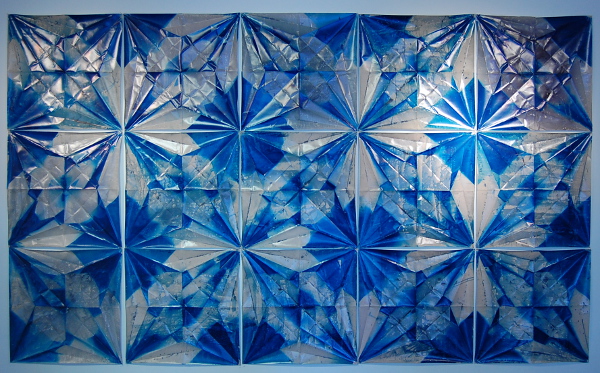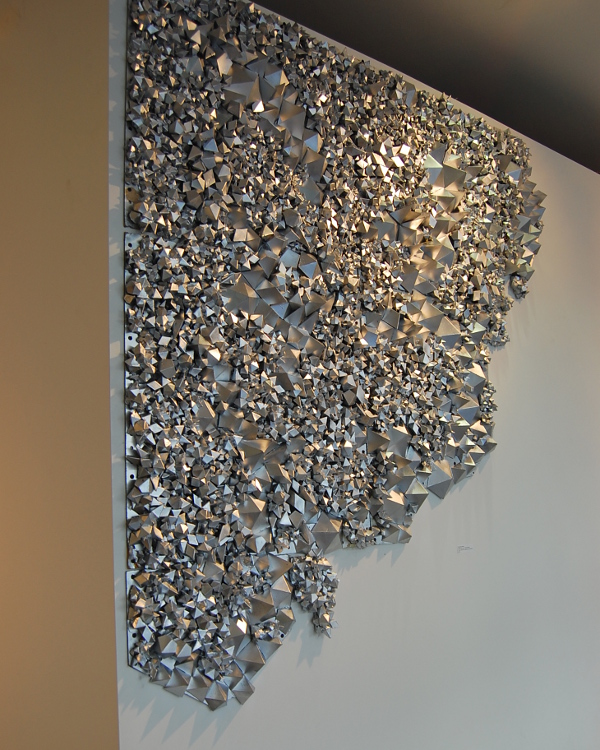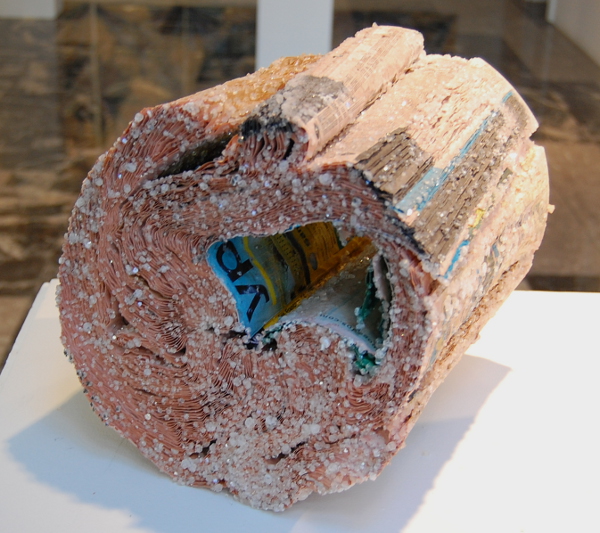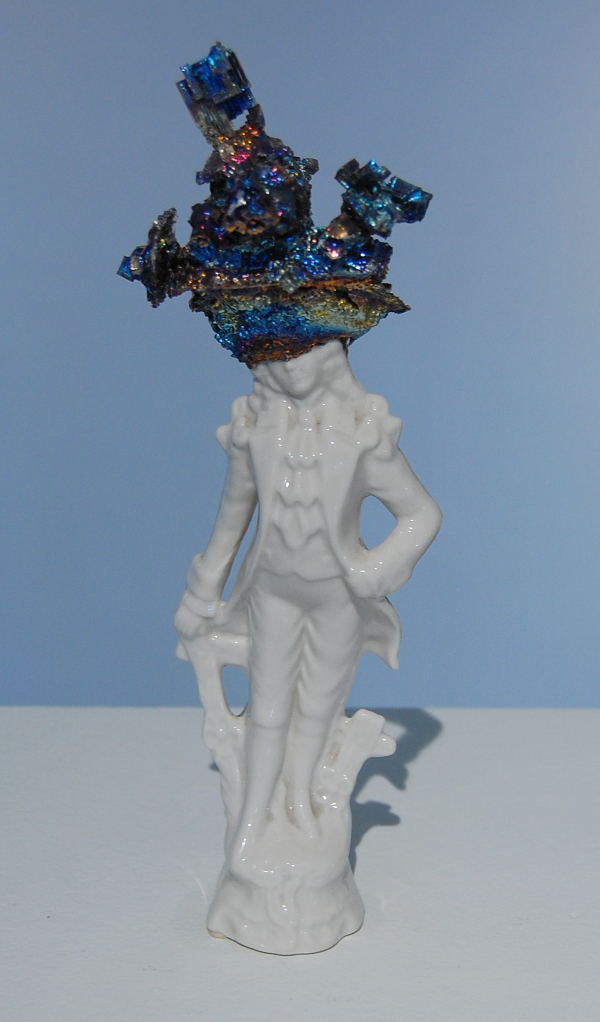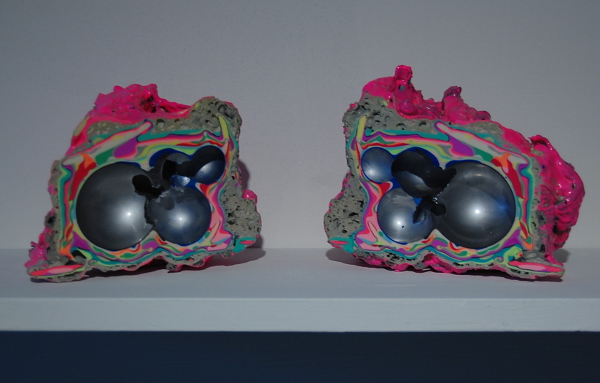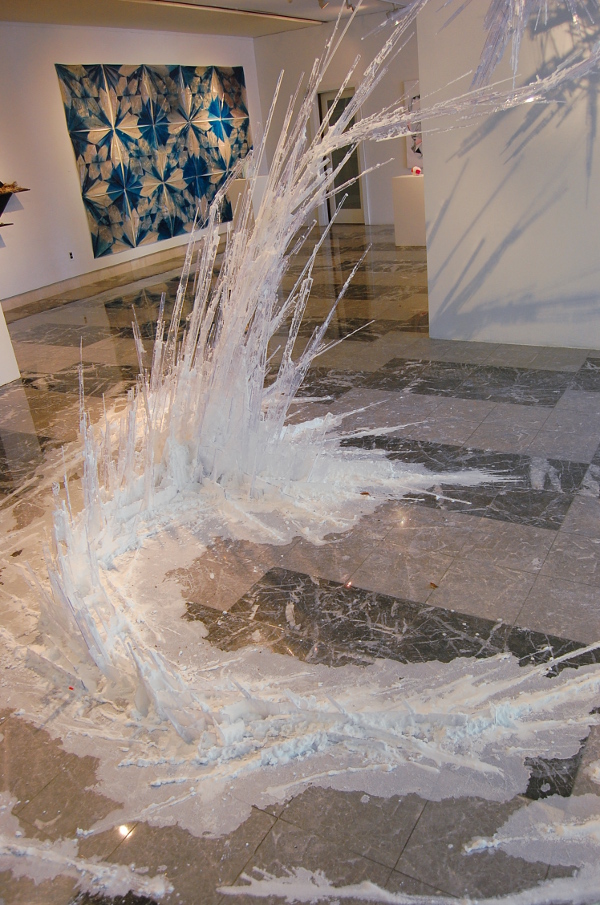
The scientific and the transcendental in crystals at Esther Klein Gallery
Human beings have had a long and complex history with crystals, but some of these faceted formations dwarf even the timescale of our species. Others, like salt or ice crystals, may take shape so quickly, they practically grow before our eyes. At the Esther Klein Gallery, part of the University City Science Center, the exhibit “Crystal Beings” curated by Angela McQuillan calls on a variety of artists and mediums to express notions of how these lustrous stones continue to inspire and astound us.
Simultaneously geological and geometric, the uncommon beauty of crystalline forms has led to their use in art and jewelry for thousands of years, profoundly affecting our collective consciousness. Crystals have been revered as objects of both spiritual power and scientific inquiry due to their naturally manifesting structures. Such exquisite, earthly compositions prompt us to stand in awe of the mysterious planet on which we reside, and artists today are no exception. Jonathan Latiano, “Skimming the Riff.”
Upon entering the lobby that houses the gallery, it is impossible to miss the shards of translucent material slicing up through the tiled floor and suspended from the ceiling. Not often does a reception area so resemble a stalagmite-laden cave, and Jonathan Latiano’s sculpture “Skimming the Riff” rightly stops us in our tracks. Composed out of pieces of clear acrylic plastic and actual salt crystals, the artwork is, at its highest point, taller than most visitors, providing an imposing welcome for anyone who steps through the doors. Part synthetic material and part actual mineral, the sculpture straddles the gap between deception and honesty, not unlike the idea of crystals themselves, which tends to teeter between science and superstition.
Christine Nguyen, “First Light Refracting.”
Christine Nguyen provides a twofold view of these formations, covering a large area of the wall with a cut and folded, spray paint and cyanotype paper tapestry of sorts — a large scale work which resembles falling, symmetrical snowflakes or ice buildup on a window. This frosty piece is just a short distance away from a diamond-shaped black shelf holding bits of ocean plants and naturally occurring mineral deposits. Seen like some sort of altar to the sea, the shelves display actual residue from the ocean as reverently as the paper work provides a quiet, representational backdrop for the show.
Paige Smith, a.k.a. A Common Name, “Revealing Destiny.”
In an installation reaching down a side wall, a metallic avalanche of jaggedly cleaved surfaces tumbles its way from the ceiling to the floor. “Revealing Destiny” by Paige Smith (a.k.a. A Common Name) provides a harsher, more rigid alternative to the quiet spirituality of Nguyen. Like some type of technological virus threatening to engulf anything in its path, this work contains elements of the cybernetic as much as the organic.
Alexis Arnold, “San Francisco Phone Book.”
Two artists take everyday items and allow nature to alter them with aggregations of crystals. Alexis Arnold coats books in borax crystals, changing the texts from vessels of content and information to functionless echoes frozen in time (and borax). Like fossils of human knowledge, they cease to be what they once were (phone books, travel guides, etc.) but leave behind evidence of their former selves.
Chris Ritson, “Bismuth Figurine.”
Similarly, Chris Ritson’s “Bismuth” takes a found porcelain figurine and grows an iridescent bismuth crystal from its head. Exploding from the strange little baroque-looking statue’s head, the unconventional, boxy crystals seem to indicate that this man has either had a really great idea or a really terrible day. Nonetheless, Ritson’s character is one of the more humorous and fascinating pieces in the show, despite its relatively miniscule size.
Elyse Graham, “Void #38.”
Add to all of this a slew of wildly colored, latex, resin and polymer ‘geode’ varieties by Elyse Graham and Malena Lopez-Maggi; photo prints of craggy, geological curiosities by Jamie Alvarez; and a series of mountainous paintings by Russell Leng, and this exhibit solidifies itself as an incredible artistic tribute to the crystal in its myriad forms. Whether humbly of this earth or somehow transcendental, what is certain is that even with their extensive history, crystals are not going out of style. “Crystal Beings” will be on display through March 20.
Esther Klein Gallery is located at 3600 Market St. in the lobby of the Science Center, Philadelphia; 215-966-6188; estherkleingallery.tumblr.com.
Recent Content
-
Artsarticle ·
-
Artsarticle ·
-
Artsarticle ·
